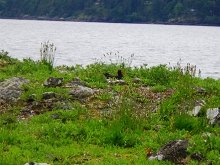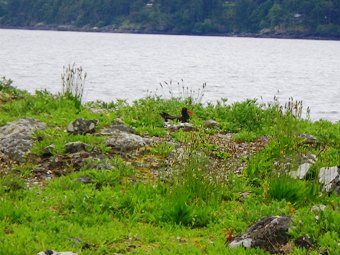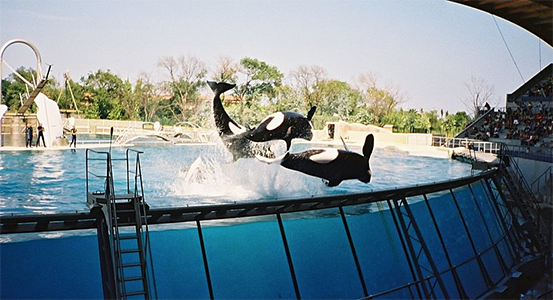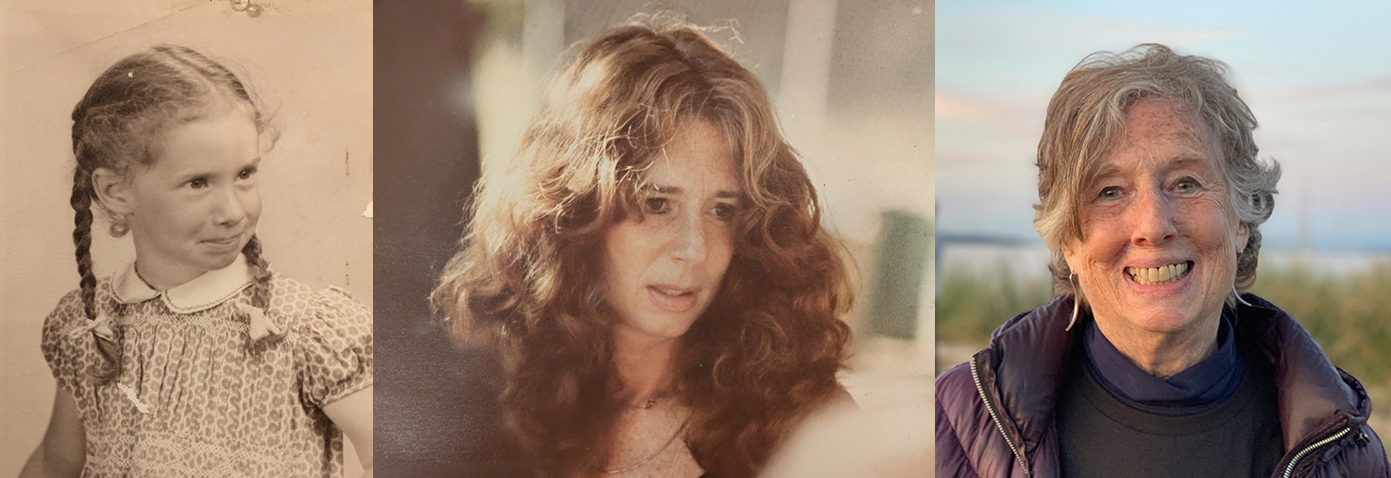— by Russel Barsh —
The Black Oystercatcher (Haematopus bachmani) is one of the most charming residents of Indian Island. With its somber black feathers, carrot-colored beak and large red feet, the Oystercatcher looks curiously out of place on a beach or sea cliff, like a gentleman in an expensive tuxedo at a burger bar.
Despite its name the Oystercatcher usually dines on mussels, which grow faster, and have thin shells that are easier to break than clams or oysters. When chicks hatch, they are fed limpets and other small, easily harvested nearby prey, reducing adults’ travel time back to the nest. The nest itself is little more than a scatter of broken shells.
Chicks must follow the adults for several weeks, learning what to eat and how to prize it off rocks. In this way, Oystercatchers have cultures adapted to local food resources that they must teach their offspring, like many mammals.
Despite their charm and intelligence, Black Oystercatchers are in decline. Their global population is perhaps 8,000 individuals, with little more than two hundred nesting pairs in the Salish Sea. Assuming that the Oystercatchers of Indian Island are producing just one chick per year that will live long enough to mate, they represent almost one percent of the entire Salish Sea Oystercatcher population!
Oystercatchers are sensitive to disturbance. Thirty years ago Ken Warheit observed that “human activities along the Pacific coast of North America have restricted breeding sites of the Black Oystercatcher to inaccessible stretches of mainland, and offshore islands and islets.” Loss of shoreline habitat is considered the main reason for declining numbers of these birds. Other major threats are predators such as bald eagles, river otters, minks and seagulls, all of which gleefully steal eggs and chicks from unguarded nests.
In this light, the persistent annual nesting pair of Black Oystercatchers on Indian Island is something of a miracle that we should respect by leaving them to nest and fledge in peace for the six to eight weeks each year that they make Indian Island their home. Researchers from Kwiaht and the Indian Island Marine Health Observatory have installed two motion-triggered cameras to preserve a record of the pair’s activities while trails are closed!
**If you are reading theOrcasonian for free, thank your fellow islanders. If you would like to support theOrcasonian CLICK HERE to set your modestly-priced, voluntary subscription. Otherwise, no worries; we’re happy to share with you.**









